Teaching Soundwalks in a Course on Gentrification, Black Music, and Corporate America

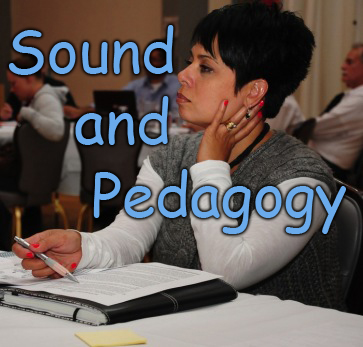
On May 5, 2018, the C-ville Weekly, a newspaper based out of Charlottesville, Virginia, published an article titled “Sex, drugs and rock ’n’ roll: new apartment complex promises at least one of those.” The headline referred to the complex being built at 600 West Main St. in Charlottesville. The complex has since been completed and studio bedrooms currently cost more than $1000 a month. As the C-ville Weekly headline shows, the developers were using the term and connotations of “rock ’n’ roll” to sell exclusive – and in many ways unaffordable – housing.
After reading this headline, I began to develop an idea for a summer course at my institution, the University of Virginia (UVA). I ultimately titled that course “Black Music and Corporate America” which I offered online during the summer of 2021 (syllabus available for download via the link above). Although the course discussed varied content – from the multi-ethnic, multi-racial, and multi-gendered histories of rock and roll to the endorsement of conspicuous forms of consumption in hip hop – I wanted to spend one unit focusing on the interrelationship between music, corporate America, and gentrification. I strove to solidify this connection by assigning two related articles. The first article, by geographer and sociologist Brandi Thomson Summers, argues that black residents in Washington D.C. adopt go-go music as a form of reclamation aesthetics to combat their city’s increasingly rampant gentrification. In the second article, ethnomusicologist Allie Martin conducts a soundwalk of D.C.’s Shaw District to forefront the experience of a black woman in the city and help displace white hearing as the default standard of interpreting sound (see Sounding Out!’s Soundwalking While POC series from Fall 2019). These two articles served as a foundation for one of the assignments the students had to complete in class: conducting a soundwalk of their own in which they had to walk around a field site of their choosing and think critically about the sounds they were hearing.
Throughout the summer sessions, students completed three main assignments related to the course topic. They had to think about marketing themselves and thus wrote a cover letter for a job or internship they were interested in pursuing in the future. We also, as a class, sent a suggestion to literary scholar John Patrick Leary, who has created a list of “keywords of capitalism:” buzzwords that get adopted in corporate lingo; we suggested “rockstar” as a term and offered him a brief explanation why:
Students also had to conduct a soundwalk. I asked them to model it after Martin’s and to also take into consideration Summers’ arguments about gentrification, white policing of black sound, and a community’s response to attempts to silence their music and culture.
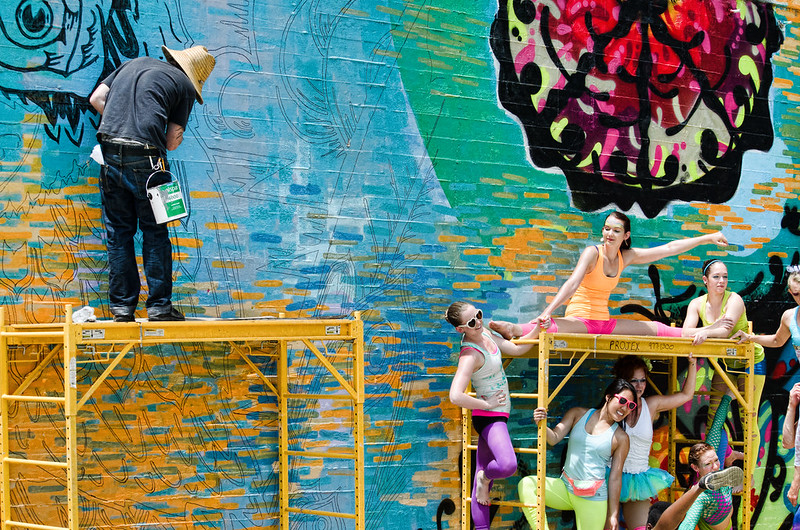
The soundwalks I received merit sharing with readers of Sounding Out for three primary reasons: 1) The assignment benefited from the online format, especially since students could conduct soundwalks in Charlottesville as well as in their homes across the country. 2) the students made compelling arguments that deserve recognition. 2) the students brought up issues that teachers interested in assigning soundwalks in the future might want to preemptively address.
Students who walked around Charlottesville focused mostly on The Corner, the portion of the city where most of UVA’s student body eats, shops, and drinks. As one student noted, during the regular semester, hundreds of students populating The Corner on any given day during the semester can silence out – literally – the concerns of the homeless and the panhandlers who make the area their home. However, over the summer, Charlottesville’s Corner becomes significantly less populated and, as this student noted, much more silent. As a result of this silence, pedestrians might be much more attuned to Charlottesville’s rampant inequality. This student, over the course of their summer soundwalk on The Corner, came to a radical conclusion: while communities might need moratoriums on evictions, or moratoriums on construction, maybe Charlottesville needs a moratorium on student noise as well.
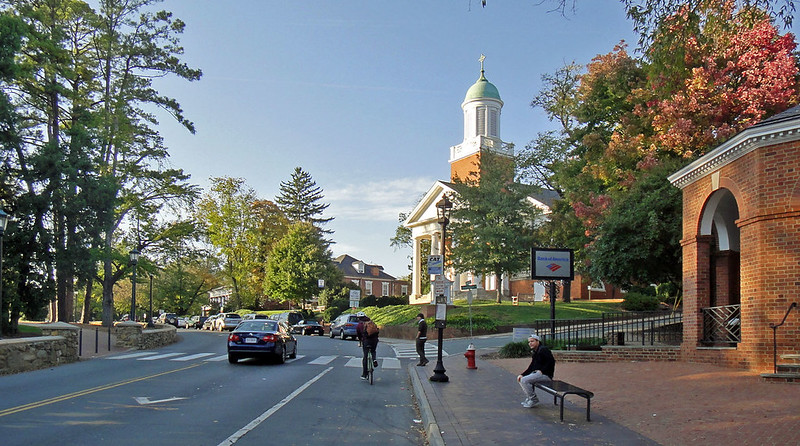
In addition to focusing on inequality, many students’ soundwalks pointed out discrepancies between what they saw and what they heard while on their soundwalks. Another student writing about The Corner noted how, as a transfer student, the music that they heard emanating from a barbershop helped make them feel at home in Charlottesville. Businesses on The Corner have historically not been entirely welcoming to people of color. Additionally, most pedestrians and patrons of The Corner are white. However, this student remarked how comfortable they felt on The Corner because they could hear one of their favorite artists, Moneybagg Yo, playing from the sound system of the barbershop they were going to visit. Long before they could visually see the business, the soundscape let this student know they were welcome. In this way, this barbershop helped create a sense of community in a similar way that the broadcasting of go-go music from Shaw’s many businesses helps create in Washington D.C.
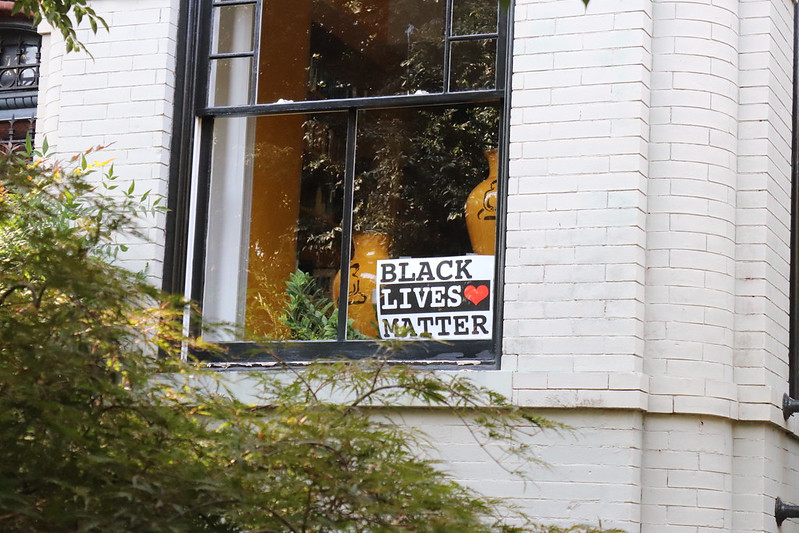
Another student focused specifically on the contradictions between the activism they “saw” demonstrated in their upper-class Boston suburb and the activism they “heard” while walking around their neighborhood. This student noted that residents of their neighborhood strove to create an inclusive atmosphere by putting up “Black Lives Matters” and “Immigrants Welcome” yard signs. However, they also cited Jennifer Lynn Stoever’s work – who we read in class – and noted the presence of what Stoever calls the “sonic color line.” As this students’ own field recordings of their neighborhood illuminated, most residents of this neighborhood valued silence. Harlemites during the 1940s and 1950s, as Stoever writes, certainly appreciated restful nights, but her scholarship also demonstrates how dominant narratives constructed black communities as “noisy,” “chaotic,” and “dangerous,” and white ones as “silent,” “efficient,” and “disciplined.” Although residents in this Boston suburb think of themselves as progressive and demonstrate their liberalism through visual signifiers such as yard signs, this student concluded that they still live in a community that privileges certain (silent) soundscapes. In doing so, such communities continue to perpetuate the sonic color line.
Admittedly, several students living in America’s suburbs struggled to conceive of the sounds they heard as worthy of discussion. For instance, the sounds of cars made frequent appearances in their writing but were often dismissed as inconsequential. Instead, students lamented that they were not experiencing a vibrant public sphere that resembled the setting of Spike Lee’s 1989 film, Do the Right Thing (a film we watched together in class), as if that representation wasn’t a very particular historicized and localized representation. On an individual basis, I tried to get students to think more critically about the sounds of cars in their neighborhood. We read about the role of automobile in the development of G-Funk during the early 1990s as well as the death of Jordan Davis, who was murdered in his car for playing rap too loudly. However, neither article resonated with students’ experience on their soundwalks since they were simply hearing cars passing by their houses or driving down the street. Most of the time, they could not tell what type of music was being listened to at all inside the car nor could they hear it emanate onto the street.
Therefore, teachers, depending on the living conditions of their students, might want to preemptively include discussions of car culture within American society. After all, more than go-go music broadcasted from storefronts, or second line parades, or music playing from boomboxes, or the noise of nature, (my) students typically hear cars in their day-to-day life. As a result, teachers assigning soundwalks may want to talk about the role of highway construction and the automobile industry on suburbanization and white flight. Discussions of automobiles within the context of environmental racism might also be useful for students to consider. Steph Ceraso’s Sounding Composition also discusses the immense time and energy corporations have devoted to car sounds and soundscapes within cars, buffering occupants from car noise as well as that of the neighborhoods outside.
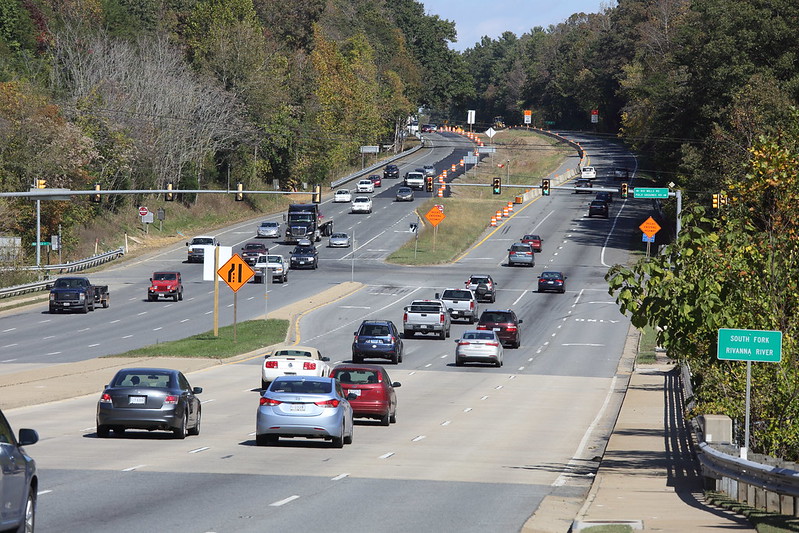
In addition, I found that students need a more robust historical understanding of suburbanization in the United States, particularly alongside an understanding of their own racial and ethnic histories. Some students living African American suburbs could have benefited from some contextualization about when and how they came to be. Talking about suburbanization in general, the development of White suburban liberalism in the 1970s and 1980s would have helped the student living in a Boston suburb make more sense of the politics of their neighborhood. Karen Tongson’s Relocations also provides context for shifts in America’s suburban landscape after sweeping changes in immigration law in 1965, as well as a rethinking of expressions of sexuality in the suburbs. These are just some topics I wish I had focused on more to help prepare my students for their soundwalks.
Future teachers may feel inclined to refer to the conclusions my students came to, as well as the literature I wish I had included in course, as they think about assigning soundwalks in their own classes. Both my students and I appreciated the soundwalk assignment and its invitations to listen differently. Teaching soundwalks in a course focusing on “Black music and marketing strategy” prompted my own necessary meditation as a non-Black scholar working in this field. Guided by Loren Kajikawa’s new research on “Music, Hip Hop and the Challenge of Significant Difference” that examines how the popularity of courses on black music help subsidize a university’s classical music offerings, I want to incorporate future discussions of Black music as sonic diversity marketing in contemporary higher ed, both at the microlevel of scholarship and the macro- institutional level, which remains far from equitable despite ongoing challenges to its status quo. For students, the soundwalks–in their words–allowed them to learn about themselves and think differently about the area in which they live. They also become more attuned to their surroundings–questioning what makes a neighborhood and for whom?–and how different cultures use their voices where they live, necessary skills for our moment that will help us envision a world beyond it.
—
Featured Image: Wall Mural right next to Bowerbird Bakeshop in Charlottesville, VA, image by Tom Mills, (CC BY-SA 2.0)
—
Rami Toubia Stucky is a PhD candidate at the University of Virginia and scholar of the music of the African diaspora, music of the Americas, commercial culture, intercultural exchange, and music and migration. Sometimes he composes/arranges jazz music and plays drums. He is currently writing a dissertation on the arrival of Brazilian bossa nova to the United States during the 1960s. He runs a personal and professional website dedicated mostly to talking about the songs his sister likes.
—
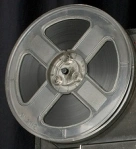
REWIND!…If you liked this post, you may also dig all this good stuff about sound studies pedagogy! Good luck with Fall semester, folks!:
The Sounds of Anti-Anti-Essentialism: Listening to Black Consciousness in the Classroom- Carter Mathes
Making His Story Their Story: Teaching Hamilton at a Minority-serving Institution–Erika Gisela Abad
Deejaying her Listening: Learning through Life Stories of Human Rights Violations– Emmanuelle Sonntag and Bronwen Low
Audio Culture Studies: Scaffolding a Sequence of Assignments– Jentery Sayers
Deep Listening as Philogynoir: Playlists, Black Girl Idiom, and Love–Shakira Holt
“Toward A Civically Engaged Sound Studies, or ReSounding Binghamton”–Jennifer Lynn Stoever
“Heavy Airplay, All Day with No Chorus”: Classroom Sonic Consciousness in the Playlist Project—Todd Craig
SO! Podcast #79: Behind the Podcast: deconstructing scenes from AFRI0550, African American Health Activism – Nic John Ramos and Laura Garbes
Listening to #Occupy in the Classroom–D. Travers Scott
SO! Podcast #71: Everyday Sounds of Resilience and Being: Black Joy at School–Walter Gershon
Sounding Out! Podcast #13: Sounding Shakespeare in S(e)oul– Brooke Carlson
A Listening Mind: Sound Learning in a Literature Classroom–Nicole Brittingham Furlonge
My Voice, or On Not Staying Quiet–Kaitlyn Liu
(Re)Locating Soundscapes of Schooling: Learning to Listen to Children’s Lifeworlds–Cassie J. Brownell
If You Can Hear My Voice: A Beginner’s Guide to Teaching–Caroline Pinkston
Mukbang Cooks, Chews, and Heals – David Lee
SO! Podcast #80: Refugee Realities Miniseries–Steph Ceraso
Hearing Change in the Chocolate City: Soundwalking as Black Feminist Method

 Since its inception at the World Soundscape Project in the 1970s, soundwalking has emerged as a critical method for sound studies research and artistic practice. Although “soundwalking” now describes a diversity of activities and purposes, critical discussions and reading lists still rarely represent or consider the experiences of people of color (POC). As Locatora Radio hosts Diosa and Mala have argued in their 2018 podcast about womxn of color and the sound of sexual harassment in their everyday lives and neighborhoods, sound in public space is weaponized to create “sonic landscapes of unwelcome” for POC.
Since its inception at the World Soundscape Project in the 1970s, soundwalking has emerged as a critical method for sound studies research and artistic practice. Although “soundwalking” now describes a diversity of activities and purposes, critical discussions and reading lists still rarely represent or consider the experiences of people of color (POC). As Locatora Radio hosts Diosa and Mala have argued in their 2018 podcast about womxn of color and the sound of sexual harassment in their everyday lives and neighborhoods, sound in public space is weaponized to create “sonic landscapes of unwelcome” for POC.
While we often think of soundwalks as engines of knowledge production, we must also consider that they may simultaneously silence divergent worldviews and perspectives of space and place. In “Black Joy: African Diasporic Religious Expression in Popular Culture,” Vanessa Valdés explored alternate conceptions of space held by practicioners of Regla de Ocha, epistemologies rarely, if ever, addressed via soundwalks. “Within African diasporic religions . . . including Palo Monte, Vodou, Obeah, Macumba, Candomblé – there is respect for the seemingly inexplicable,” Valdés remarks, “there is room for the miraculous, for that which can be found outside the realms of what has been deemed reasonable by systems of European thought. There is room for faith.” Does current soundwalk praxis—either as research method, public intervention, artistic medium, field recording subject, or pop culture phenomenon—impose dominant ideas about space and knowledge production as much as—if not more–they offer access to alternatives? Are there alternate historiographies for soundwalking that predate the 1970s? Can soundwalks provide such openings, disruptions, and opportunities without a radical rethinking? What would a decolonial/decolonizing soundwalk praxis look and sound like?
Soundwalking While POC explores these questions through the work of Allie Martin, Amanda Gutierrez, and Paola Cossermelli Messina. Today, Allie Martin kicks off the series with a powerful reframing of the soundwalk as a black feminist methodology. —JS
In July 2018 I visited Oxford, Mississippi for the first time, to attend a workshop on conducting oral histories. Upon walking with a friend back to our accommodations on the University of Mississippi campus, we heard a voice calling to us from far away, up a hill somewhere. It was a catcalling voice—that much I definitely recognized—but I also felt sure that I heard the word “nigger.” My friend, who is also a black woman, heard the taunting sounds of the voice but not that word specifically. Herein lies one of the difficulties of black womanhood: I was unable to distinguish which of my two most prominent identity markers (blackness and womanhood) the speaker was using to harm me in that moment. I found it ironic that I came to Mississippi to learn best practices for listening to people’s stories, but could not hear my own story, could not say for sure what had happened to me.
In the time since that visit, I have come to embrace the speculative sonic ephemerality of black womanhood and utilize it on my soundwalks. Soundwalks are a popular method for understanding the everyday sonic life of a place. Reminiscent of Michel de Certeau’s “Walking in the City,” soundwalks offer the kind of embodied experience missing from other more static soundscape recordings. I argue here that soundwalks can operate as black feminist method, precisely because they allow me to center the complex, incomplete sonorities of black womanhood, and they are enough in their incompleteness. One of our foremost thinkers on black feminism, Patricia Hill Collins, has argued that black women’s knowledge is subjugated (1990). I understand this to mean that my knowledge is tainted somehow, too specialized or not specialized enough, and not considered fit for application by a broader audience. Soundwalks as method, though, rely on my own subjugated knowledge. What did I hear? Black feminism centers and humanizes black women, and I utilize soundwalks to humanize myself in a soundscape that would otherwise disregard my sonic perceptions in favor of white hearing as the default standard of sound.
I began soundwalking in Washington, DC as a part of my dissertation project, which explores the musical and sonic dimensions of gentrification in the city. Gentrification is often considered in visual terms, meaning that a neighborhood is considered gentrified because new coffeeshops, bike lanes, and dog parks make it “look” different from what was once there. I recognize these new additions as important markers of gentrification, but what do they sound like? And what do these sonic markers reveal about the sonorities of race?
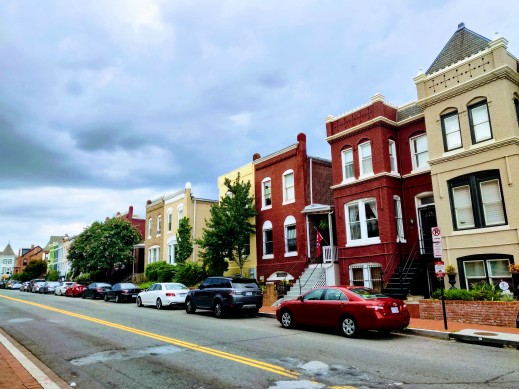
Rowhouses in the Shaw neighborhood, image by author
I have taken up the sonic exploration of gentrification, drawing inspiration from Jennifer Stoever’s Sonic Color Line and Regina Bradley’s exploration of the criminalization of black sound. As SO! writer and ethnic studies scholar Marlén Rios Hernandez has noted in her work on racial and spatial shifts in early punk in 1970s Los Angeles, it is crucial to work on “delinking gentrification as exclusively spatial and analyzing it as also a sonic force of expulsion.” Having spent time researching the auralities of gentrification in DC, I understand it to be a process that silences poor and marginalized populations while amplifying the concerns of those privileged enough to have the ear of the DC Council and developers. Gentrification displaces musicians and music genres, while increasing tensions around music and noise in “public” space. More than these changes, though, gentrification changes the soundscape of the city.
My soundwalks focus on the Shaw neighborhood in the Northwest quadrant of DC, part of the fastest gentrifying zip code in the country. Before the explosion of development, Shaw was a cultural hub of black DC, only blocks away from the U Street Corridor, formerly known as Black Broadway. From Pearl Bailey to James Brown, prominent black entertainers frequented the neighborhood because they were unable to perform in or have accommodations in other areas of the city. As the neighborhood shifts and transforms, the soundscapes grow louder with new nightclubs and quieter due to increased reporting of noise violations. The neighborhood diversifies in terms of languages, increases in siren whoops, and new sounds appear, such as the beep of a dockless scooter. Shaw has seen a concomitant increase in property values, community gardens, and bars; a Whole Foods is set to open in the neighborhood by 2020.
[The recording here is of a soundscape at 7th street and Florida Avenue NW, a busy intersection at the north edge of Shaw. Recorded on a mid-September afternoon, you can hear go-go music (DC’s indigenous subgenre of funk), engines idling, and the whoop of a siren. In the past two months, this intersection has become a battleground for cultural erasure, as artists, activists, and councilmembers attempt to legitimize the go-go music that has been playing in the area since 1995.]
During the day, Shaw oscillates between a quiet neighborhood and a busy city space. Traffic, horns, and sirens are frequent, yet so are the sounds of children at recess and old men chatting outside on their stoops or outside of corner stores.
Conducting soundwalks as a black woman in this gentrifying neighborhood is a curious space to tarry in. I am in some ways an outsider as a non-resident, mindful of who and what I record at any given moment because part of what makes gentrification such a tense and terrifying process is the lack of control that residents (particularly renters) have regarding their futures, and often their presence too. I am also an insider, a black woman in this space where being a black woman is not (yet) anything out of the ordinary. In fact, as the months went on, more of my recordings feature me speaking to people on the street, some I had come to know and some still strangers to me.
One of my favorite interactions on a soundwalk came early on, in late February of 2018. I was running late for an interview, listening intently to what was going around me, when I walked past a black man, seemingly in his 30s, on a narrow sidewalk. The exchange went something like this:
Man: Whoa, whoa, why you running up on people?
Me: My bad, my bad!
Man: It’s okay. Hey sis, you know how to make grits?
Me: [laughing], Nah, I don’t know how to make grits.
Man: What about pancakes?
Me: Yeah, I can make some pancakes.
Man: Ayyyee, I’m tryna get some breakfast!!
Me: I don’t know about all that!
The exchange, not quite a catcall but not quite comfortable either, consistently faded in volume, because during the entire time we spoke, I continued to walk away from him. I was in a position of wanting to speak, because I know the politics of being an outsider in a gentrifying neighborhood and not greeting folks as you walk by. However, I also know the dangers of being a black woman walking alone, and so I negotiated a lighthearted exchange while making my way to my destination. My soundwalks, then, act as a sonic record of gentrifying space as well as my attempts to keep myself safe.

Shaw from a rooftop perspective, Image by author
These moments also inform the contours of my dissertation project on hearing gentrification in DC. The larger project involves passive acoustic recording in the same neighborhood, a methodology that entails creating a large amount of short soundscape recordings over a long period of time. Understanding both my soundwalks and passive acoustic recording as black feminist method allows for the consideration of multiple sonic perspectives of the neighborhood, rather than one record. When once describing passive acoustic recording to a colleague at a digital humanities workshop, they celebrated the idea that I would be able to “objectively” hear what was occurring in the neighborhood, instead of relying only on pieced together accounts from community members.
However, just as black feminist thought amplifies my “tainted” knowledge, it also mutes the authoritative “objective” knowledge of a rooftop recorder. The sounds of the stationary recorder placed on a rooftop at 7th and Florida are as partial and positioned as the recordings of my footsteps as I move around the neighborhood. As I continue to walk, be it through the unfamiliarity of Mississippi or my hometown DC, I do so with the reassurance that what I hear is enough.
—
Featured Image: Shaw From Above, by author.
—
Allie Martin is a PhD Candidate at Indiana University in the Department of Folklore and Ethnomusicology. Her dissertation project explores the musical and sonic dimensions of gentrification in Washington, DC, using a combination of ethnographic fieldwork, archival research, and soundscape recordings. Originally from the Washington, DC, metropolitan area, she received her BAs in music performance and audio production from American University.
—
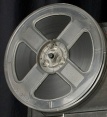 REWIND! . . .If you liked this post, you may also dig:
REWIND! . . .If you liked this post, you may also dig:
SO! Amplifies: Listening to the City Handbook
Sounding Out! Podcast #2: Springtime in KC: Soundwalking Kansas City—Liana Silva
Unlearning Black Sound in Black Artistry: Examining the Quiet in Solange’s A Seat At the Table–Kimberly Williams






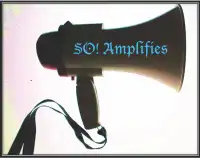
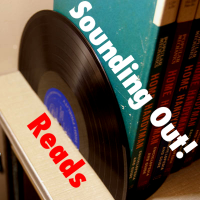





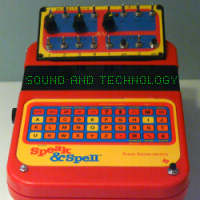


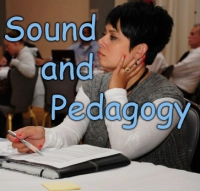

Recent Comments